Amarillis - a rare flower and uncomplicated. If you create comfortable conditions for it, it blooms perfectly, releasing the high bloomer with elegant colors-bells of dairy, red, salmon-pink. On how to grow Amarillis in the garden and will be discussed in the article.
Amarillis, cultural description
Amazing Amaryllis comes from America, but in nature it can be met in the southern regions of Africa. It belongs to the plant family of amarylline. It is valued for peculiar flowers, resembling drooping lilies, and their unusual color.
Distinctive Botanical characteristics of Amarillis:
- Amarillis linear sheet, reminds long tongue. The width of foliage is 3-4 cm, and in length it reaches 50 cm. The leaves form a thick outlet and are located in parallel, forming two rows.
- The root system of the amaryllis is represented by a bulb. The bulb and the juice of the plant is poisonous.
- Amaryllis Flowers Large, Bells. They are formed on elastic space-standing blossoms. The palette of colors is diverse: snow-white, dark bug, allay, light green. Most varieties of petals are motley with velvet surface.
- Amarillis in color depletes strong sweetish flavor. Amazing blossom starts in autumn, and lasts about 8 weeks. The sophistication of the plant is given large inflorescences from a variety of flowers, which are similar to a chic bouquet.
- The view needs a vacation, so it alters the time of wakefulness and sleep. After flowering, the bulb is digging, and in winter it contains indoors with heating.
Interesting! Amarillix juice was used to process the tips of combat arrows to process tips. Now this plant is used in medicine and is part of anticonvulsants.
Amarillis, varieties
In nature, only one kind of Amarillis - Belladonna (beauty) is more common. But recently, another rare species of paradisicola appeared in the Nomenclature of Amarillis.
Amarillis Belladonna Despite the compactness of the bush has pretty large flowers. Their color is more often salmon, red, white and pink and purple. The species numbers many varieties with different shapes of petals, leaves size and flowering periods.
Here are the most popular varieties:
- Blanda - blooms with large white bell-bells, does not have a fragrant aroma.
- Maxima - at varieties of gentle proudly raised flowers collected in a large pink bouquet.
- Purpurea - releases high bluer paints, dilated with purple petals and a gentle yellow middle.
- Minerva - small flowers with striped petals.
- Exotic Star is an interesting variety with narrow-footed flowers of white-salmon.
- Durban - Flowers are large with carmine and red petals.
- The Snow Queen - Flowers Large, Glossy. The base of flower petals is white with a gentle cream chopping.
- La-groove - the plant has an unusual color: green petals with red crossing.
Amaryllis Paradisicola does not differ in the wealth of colors and varieties. The species grows with a large number of monophonic pink flowerfish. In one inflorescence there may be about 20. The amaryllis of paradisicol depletes the gentle fragrance. The form is used only for growing in street conditions, hybrid forms has no.
How to distinguish Amarillis from Hippeastrum
Amarillis and Hippeastrum are often taken in one species. They both belong to one family and externally very similar. But for growing in street conditions, exclusively Amarillis is suitable. Unfortunately, in the horticultural stores, it is often selling Hippeastlais under the guise of amaryllis. They are difficult to distinguish without experience, because they have identical large bulbs and gramophone flowers.
Therefore, if you are only going to buy Amarillis, learn a few differences:
- Hippeastrum flowers are very large and often reach 15 cm in the diameter, and Amarillix has no more than 8 cm.
- Amarillix has a durable flowers with 8-12 with flowers, and the leaper is loose, tubular, flowerfold from 2 to 6.
- Amarillis willingly grows in the garden, and Hippeastrum is an exclusively indoor plant.
- Amarillis has a pear-like bulwon, she quickly builds the children, and Hippeastrum does not form small and kids.
- Amarillis releases flowers after foliage dying, and there are flowers and flower sockets on the hypadastrum during flowering.
- The flowering of the gippeastrum falls for the winter, and Amaryllis has for autumn.
Amarillis in the photo:
Hippeastrum in the photo:
Amarillis, landing and care
Heat-loving Amarillis is grown in the open ground in warm regions where there are no winter frosts. But you can start this handsome and in a more severe climate, it simply takes it every fall to roll into a pot and take home.
Choosing a place under the landing of Amarillis
- Amarillis requires a lot of bright light. It is planted at a spacious location without high plantations and buildings. He will fit the south side of the garden, protected from the winds. Amarillis develops well on stony alpine slides.
- The most important condition for the Amarillis plant is strongly drained soil. For the landing of Amarillis, you can buy a ready-made soil for bulbous crops.
- The predominance of severe, clay soil involves entering into the pit of a repeated compost.
Rules of landing Amarillis
The bulbs of Amarillix are inspecting before landing. A healthy plant has a dense bulb, with scales without traces of rot or mold. If stains and tracks are detected, the affected areas are cut, processed with fresh coal. Before planting, the bulbs are kept in a solution of manganese.
Landing Amarillis:
- The bulbs are planted in March.
- On the bottom of the spacious well, the ball of drainage is stacked.
- The bulbs deepen at 15 cm, completely covering the earth.
- If a group landing is carried out, a distance of 25 cm remains between the bulbs.
- After planting, the Amarillis plant is not watered, and only when the sprouts will grow by 10 cm, provide abundant irrigation.
- Immediately conduct mulching with sawdusts so that the top layer of the soil does not knead that it has a destructive effect on the bulb.
Important! In the regions with a hot climate, Amarillis planted under the winter, in October-November, without subsequent transshipment in the pot for the winter.
Amarillis, Open Ground Care
If the Amaryllis came climatic conditions, care for it will be simple.
Watering and feeding Amarillis
Immediately after landing, Amarillis watered moderately. When the plant reaches 10 cm in height, watering increases. A growing plant needs a large amount of moisture, so the land near the roots mulk sawdust.
Amarillis feed over a warm period. Every two weeks, organics and minerals alternately contribute:
- As organic fertilizers, a korovyan is used (150 g per 5 liters of water) or a bird litter (35 g per 5 liters of water).
- Mineral fertilizers are used with the predominance of potassium and phosphorus (on a liter of water take 3 g of the mixture).
- You can use such complex feeding: 150 g of ammonium nitrate, 400 g of potash salt, 350 g of superphosphate.
Advice! Amarillix flowers are high with multiple colors, so during the flowering period the plant needs a support.
Amarillis plowed what to do
If the amaryllis is grown in the warmth climate, it does not dig it and is covered with peat crumbs for the winter.
In the regions with frosty winters, Amarillis after flowering digs for storage:
- For this, watering is gradually cut, cease to make fertilizers.
- When the entire above-ground part buys, the bulb digs up and roll into a flower pot.
- Contain a plant at a temperature of 10-12⁰, scarily watered through the pallet.
- Either a bulb wrapped into paper and stored in the cellar, provided that there is no temperature drops below 0⁰.
Amarillis, Transplant
Every three years, the plant, which winters in the open field, transplanted to separate the children. Do it after flowering:
- Soil watered to the bulb is easily separated from earth coma and roots are not damaged, then dig.
- Peduncle cut at the base excess is removed flakes.
- Then carefully separated children, and planted them along with the parent bulb in the ground without watering.
Advice! Transplant amaryllis recommended if he has ceased to bloom or the leaves showed signs of the disease.
Amaryllis, reproduction
Amaryllis are propagated in two ways - by sowing seeds and separating the daughter bulbs.
Reproduction amaryllis bulbs
As with all bulbs, amaryllis actively acquires new bulbils. With the help of their separation easiest way to get new bushes amaryllis.
Planted bulbs subsidiaries as follows:
- From maternal bulbs before spring planting has got off children.
- In the prepared hole drainage layer is laid.
- Then spend plant the bulbs in the ground.
- New bulbs bloom for 2-3 years.
Amaryllis, growing from seed
Seed propagation amaryllis difficult and not always ends in success, so it is rarely used. In addition, plants grown from seed to bloom only in the seventh year.
To get the seeds amaryllis, its cross-pollinate (spend a brush on the flowers). The period of ripening seeds - 2-3 months. They are removed from the box, and carry out planting:
- The drainage container is poured up to two centimeters.
- Then the nutrient substrate is placed, the same as for planting the bulbs.
- The soil was tamped, the grooves 2 cm sown seeds.
- Distance between seeds left 1-1.5 cm.
- The soil is moistened with an atomizer, avoiding overflow and drying.
- A month later, when the shoots will grow, its dive into individual pots.
Diseases and pests amaryllis
Pests and bacteria can damage the bulb and the aboveground part of amaryllis. Moreover, the bulb loss almost always results in death of the plant.
What to look for in time to save amaryllis:
- Onion mite causes a yellowing of the leaves, the termination of flowering, wilting flower arrows. For the treatment used insecticides.
- Coccidae - leaves covered with brown spots. Use insecticide and soap solution.
- Amaryllidaceae mealybug provokes death of leaf plates, new foliage grows very slowly. This parasite lives between the bulb scales. For the treatment of an onion cut the damaged areas. Then, within a month the soil by the root is treated with insecticide.
- Fusariosis - Greens yellow and fades. The bulb digs up, cut off parts, treated with antifungal agent. If most of the bulbs are amazed by rot, it is destroyed.
- Viral mosaic - the virus is transferred to the trips. Leaves change color, covering patterns. The disease is poorly treatable, so the plant is often destroyed.
- Slug and snails - eat a juicy foliage of Amarillis. Pests are collected manually or used dolomite flour.
- Narcissal flies - its larvae destroy the foliage and gradually penetrate the bulb. For prevention, the ground is soaked in the earth.
- The anthracnose - foliage darkens, it appears brown lodges. The bulb is transplanted to a new place with a pretreatment of phytoosporin.
- Red burns - foliage and flower arrow are covered with red spots caused by fungi and ticks. In order to save the plant, you need to dig a bulb and immerse it for 2 hours into the water with temperatures of 46⁰s.
How to care for amaryllis, possible problems
Amarillis quickly reacts to unsuitable clarification, lack of minerals, humidity level and other external factors.
Why amarillis does not bloom
With the cultivation of Amarillis often, such a problem occurs as the absence of flowering. Amaryllis blossoms in such reasons:
- Poor soil: Amarillis is very demanding for the composition of the soil, so the lack of nutrients leads to the cessation of flowering.
- Incorrect selection of places for landing: Light deficiency and clay soil lead to the fact that the amaryllis does not bloom.
- A large number of subsidiaries: if the plant lives in the soil without transplanting for the winter, once every three years be sure to separate Lukovichi.
- Improper planting of the bulbs: If Amarillis plant more than 15 cm deep into, he will not be able to form a full-fledged flower.
Why amarillis yellow foliage
If the plant is yellowed, the resulting outlet, the reasons for two: or the waves and trips settled on the leaves, or excessive irrigation is carried out.
In the first case, you need to treat Amarillis by the Apertelkom, in the second case, regulate watering.
Why amaryllis pale leaves
When the plant is planted on a plot with an open scorching sun, his foliage burns out. If this happened, Amarillis needs to be a little pronounced.
Pallor and partial fading of the leaves may be the result of the oveurgement of the soil and lack of drainage. Another reason is the spraying of the leaves: the Amarillis does not tolerate this.
Amarillis in Garden Landscape
Blooming Amarillis proudly occupies central parts of the garden. His beauty is able to emphasize beautiful deciduous cultures.
Indispensable Amaryllis on the Alpine Hill or Stone Rokaria. It can be combined with low-voltage plants - lilies, primoses, begonia.

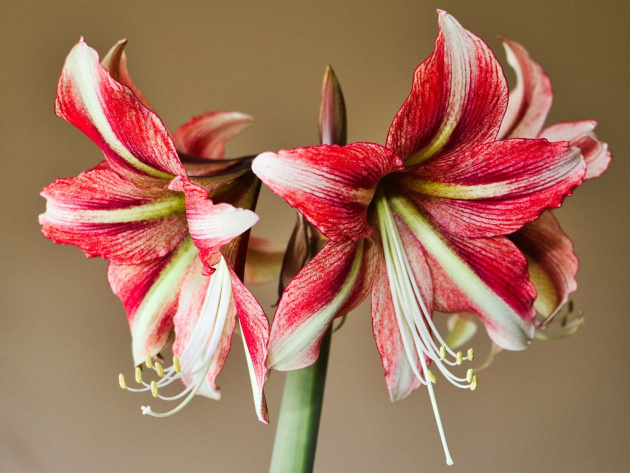


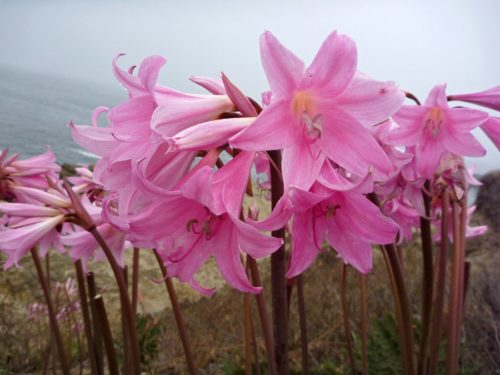
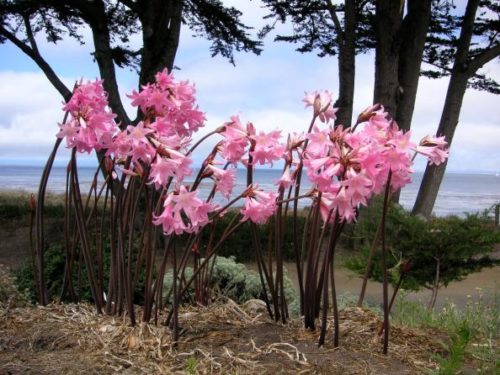


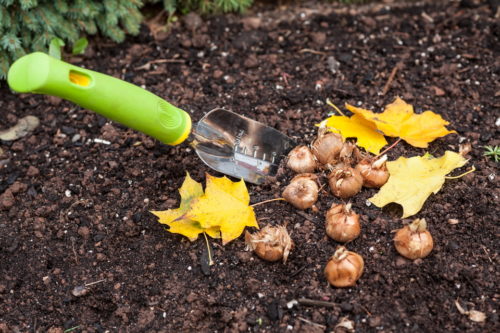
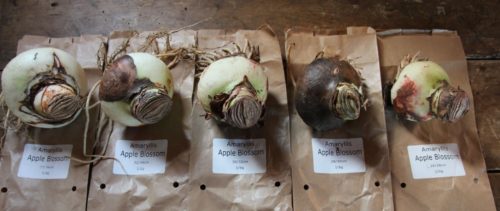
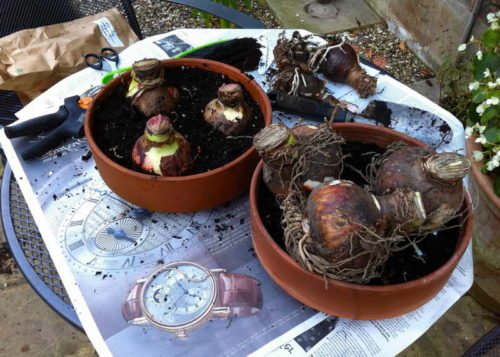



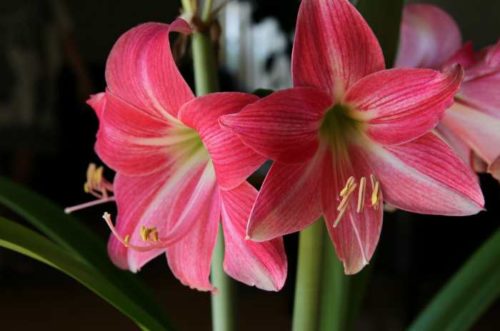
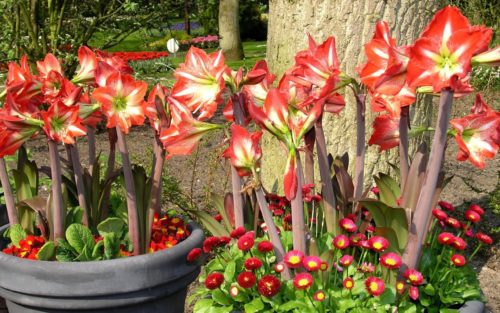
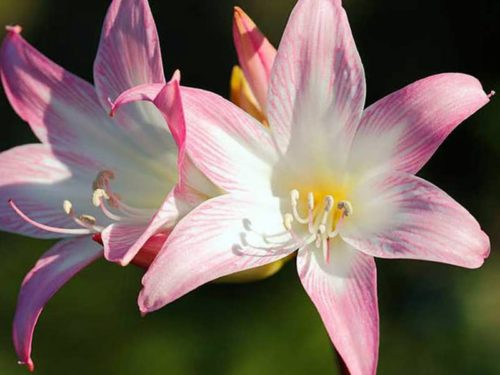

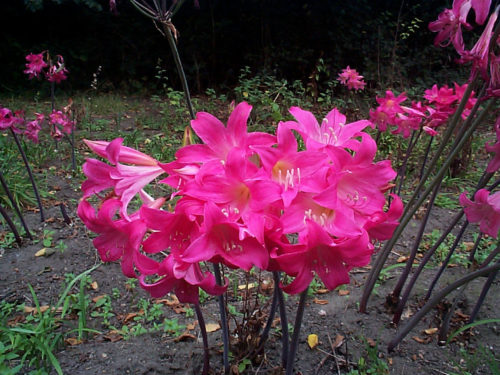












 Start a discussion ...
Start a discussion ...